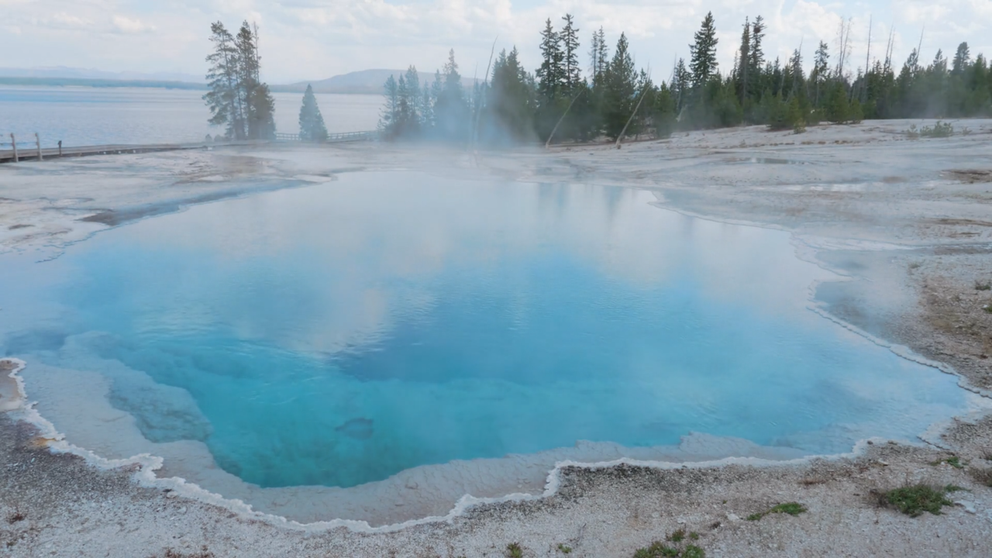America’s jacuzzis: How hot magma gave us hot springs
The luxurious geothermal sites are a perfect confluence of water, heat and rock, which dictate where the springs emerge and how hot they can be.
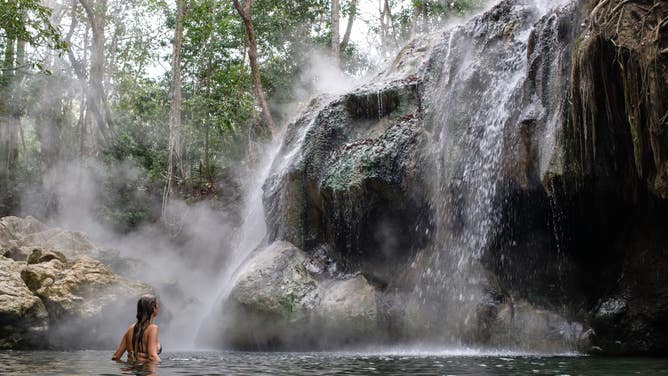
A woman swims near a cascade of steaming hot springs.
(Jorge Fernández / LightRocket / Getty Images)
Adventurers travel near and far to take a relaxing dip in hot springs.
Some springs are enjoyed in their wild state, whereas others have been harnessed by bathhouses, helping spawn historic resorts and entire towns.
While soaking in hot springs has become a time-tested tradition for melting away stress, they also serve as a reminder of the geological processes churning beneath our pruny feet.
An uncommon trifecta
Anatomy of a Hot Spring
The luxurious geothermal sites are a perfect confluence of water, heat and rock, which dictate where the springs emerge and how hot they can be.
"Hot springs are a part of our natural heritage and a beautiful part of that heritage," said Phillip Hays, a hydrogeologist with the United States Geological Survey and research professor at the University of Arkansas.
According to Hays, hot springs are relatively uncommon with only a few hundred bubbling up around the world. By comparison, cold springs number in the hundreds of thousands.
"This is due to the elements that are required to bring forth a hot spring," Hays said.
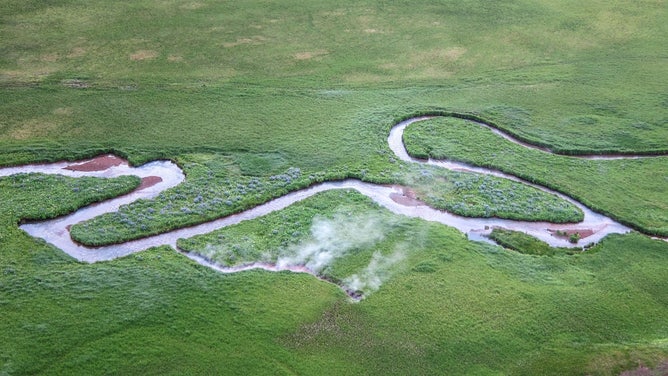
Steam rises from Hot Springs Creek in Akutan Island, Alaska. The island is part of a mountain range formed by volcanoes, which in turn provide a heat source for hot springs.
(Smith Collection / Gado / Getty Images)
One element is a source of water, and the second is a source of heat.
"And then the third element would be what we call a hydrogeologic framework, which is really just a fancy name for geological plumbing," Hays said.
"We have to have those three elements in place to give us the hot spring, and it turns out it happens a little bit rarely."
Seeping through the cracks
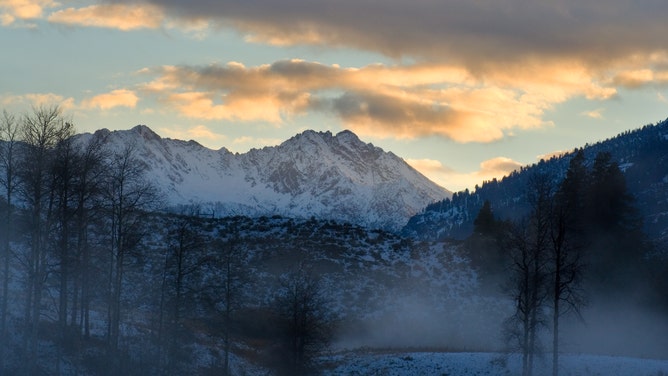
In Idaho, hot springs steam up with mountains in the background.
(Eric Zamora / VW PICS / Universal Images Group / Getty Images)
So, where does one find the rare hot spring?
The answer: look toward the mountains.
According to Hays, mountainous areas are rife with the hydrogeologic framework, or geological plumbing, that’s needed for the formation of hot springs.
Faults, folds and breaks in the rock provide open space conduits that water can move through. In doing so, the rock directs the flow of water.
"This fracturing and folding often occur with mountain building," Hays said.
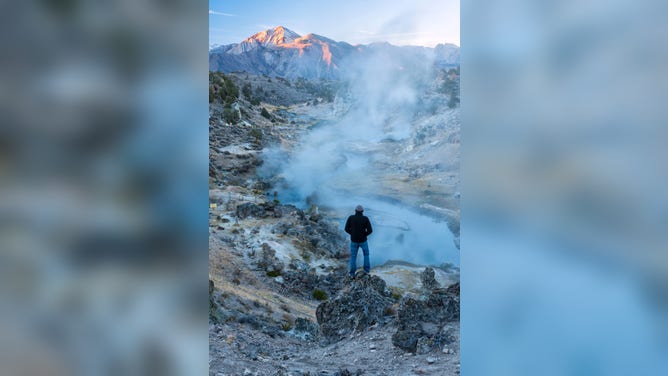
A man gazes at Hot Creek in California's Sierra Mountains. The spring's heat comes from a chamber of hot magma that lies about three miles below the surface.
(Dukas / Universal Images Group / Getty Images)
In the United States, two popular hot spring hotspots include Yellowstone National Park, located primarily in the Wyoming stretch of the Rocky Mountains, and Hot Springs National Park, located in the Arkansas portion of the Ouachita Mountains.
Great depths, great heat
While mountainous areas often provide the plumbing for hot springs, the water that flows through them comes from above.
"Most water for hot springs is sourced from rainfall or snowfall," Hays said. "And so, it begins its journey by percolating down in the shallow subsurface."
With the plumbing and water in place, the third element for a hot spring is teed up far below the earth’s surface: heat.
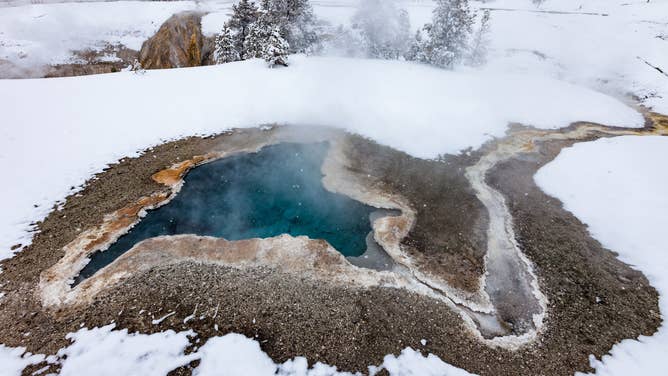
Blue Star Spring steams on a cold winter day in Yellowstone National Park, Wyoming. The spring's piping hot heat comes from molten rock churning within the floors of Yellowstone.
(Jon G. Fuller / VW PICS / Universal Images Group / Getty Images)
"There are two mechanisms that are responsible for heating water in most all hot springs," Hays said.
"The first, and maybe the one that comes to most people's mind most quickly, is where we have the intrusion of magma — molten rock associated with igneous or volcanic activity in proximity of a groundwater flow system. That molten rock is hot rock. It heats up the water."
In fact, molten rock is the heat source for Yellowstone National Park’s hot springs, geysers such as Old Faithful and other geothermal features.
"The second very common source is the heating of groundwater by the Earth's natural geothermal gradient," Hays said.
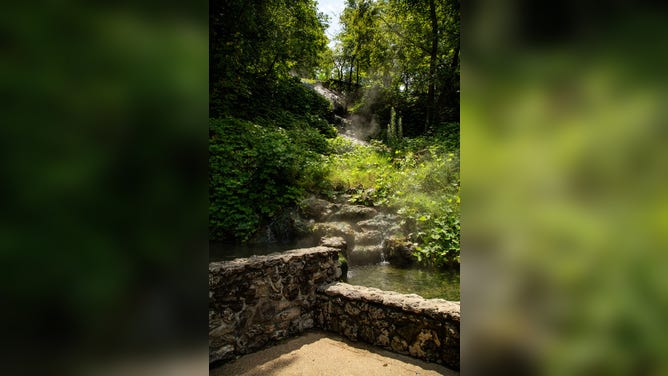
Hot Water Cascade, the largest visible spring in Hot Springs National Park. The water gains its heat from deep underground.
(Mitch Smith / National Park Service)
According to Hays, temperatures within the Earth increase by one degree Fahrenheit about every 60 to 80 feet below the surface.
In Hot Springs National Park, water flows between 6,000 and 8,000 feet deep into the ground. At those depths, groundwater that began at temperatures around 65 to 70 degrees near the surface heats up to about 160 to 170 degrees.
But to become a hot spring, the water must move back up to the surface — and fast.
According to Hays, this is where the hydrogeological framework plays a role, as well. It helps the water to move upward quickly, preserving the heat and emerging at the hot springs.
All that glitters isn’t gold
Water flowing into a hot spring is like drawing a warm bath on the earth’s surface.
As enticing as these pools can be, not all are safe to dip your toe in.
"The first consideration would be temperature," Hays said. "Of course, different folks seem to have a different tolerance for how they like their baths. But there is a point where it's just going to burn if you're not careful."
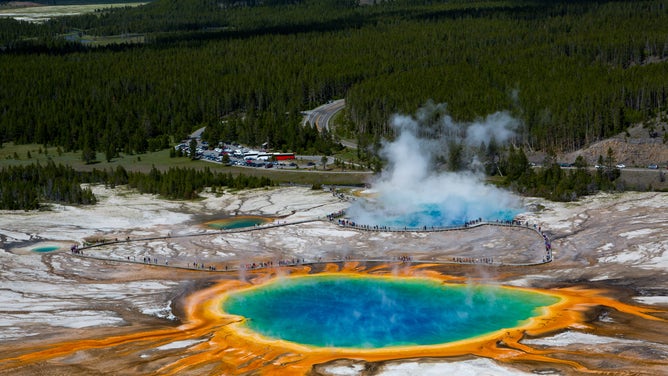
The largest hot spring in Yellowstone National Park is Grand Prismatic Spring. Its vibrant colors are caused by bacteria that can survive the extreme heat and acidity of hot springs.
(Inger Vandyke / VW PICS / Universal Images Group / Getty Images)
One one hand, some hot springs may meet with cold water springs, which creates a warm blend of water that’s safe for soaking and swimming in.
On the other hand, some hot springs remain too hot to touch, such as those in Yellowstone National Park, where hot springs are often boiling.
"Water quality is the other controlling factor for whether springs are suitable for soaking, for bathing," Hays said.
"From that perspective, the chemistry of the spring water determines the suitability for bathing, and that chemistry is determined by the rock type through which the water has flowed during that long journey through the subsurface."
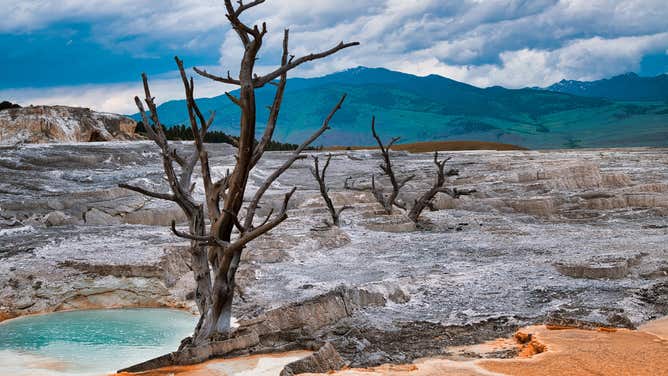
The temperature and chemistry of some hot springs make them inhospitable for most organisms.
(Gagliardi Giovanni / REDA&CO / Universal Images Group / Getty Images)
According to Hays, rock contains various minerals that dissolve in water — especially when the water is hot. Water that was heated up deep underground picks up a great deal of dissolved minerals as it makes its way to a hot spring.
"Rock minerals can potentially contain toxics, such as arsenic, selenium, sulfur, which by itself is not so bad," Hays said. "But sulfur can generate hydrogen sulfide, which is very toxic or sulfur can be oxidized to generate sulfuric acid."
"Who wants to take a bath in strong sulfuric acid? Not many."
The culture and attraction of hot springs
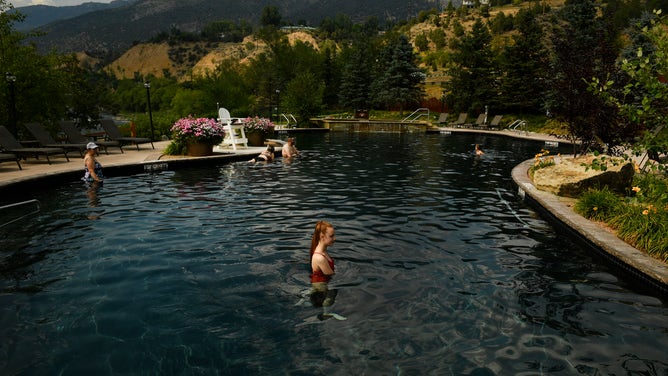
People swim in a pool at Iron Mountain Hot Springs in Colorado. Nestled in the Rocky Mountains, the resort harnessed the hot springs to created soaking pools.
(Helen H. Richardson / MediaNews Group / The Denver Post / Getty Images)
No matter their chemistry and temperature, some notable hot springs have helped sprout new towns and have become iconic features in national parks.
Yellowstone National Park, established 150 years ago in 1872, now boasts "the most active, diverse, and intact collections of combined geothermal features with over 10,000 hydrothermal sites and half the world's active geysers," according to the NPS. In fact, its hot springs — while often too hot to touch — are some of the park's most colorful attractions.
According to the National Park Service, the area that would become Hot Springs National Park and the city of Hot Springs, Arkansas, had bathhouses being built around the springs by the early 19th century.
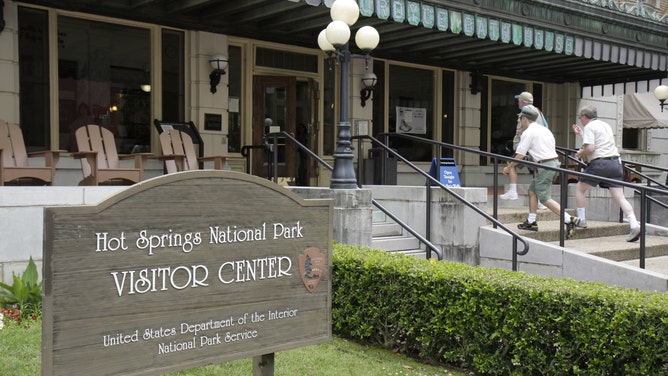
In 1832, President Andrew Jackson signed legislation to protect the area that would later become Hot Springs National Park in Arkansas.
(Jeffrey Greenberg / Universal Images Group / Getty Images)
The bathing industry boomed in the following decades, turning Hot Springs "from a rough frontier town to an elegant spa city."
"We have a huge amount of culture built around hot springs, a huge amount of history," Hays said.
"Hot springs locations, for a lot of really nice cities with some lovely histories, they're associated with a great deal of cultural traditions there and that folks have had — and I think that's very important."
